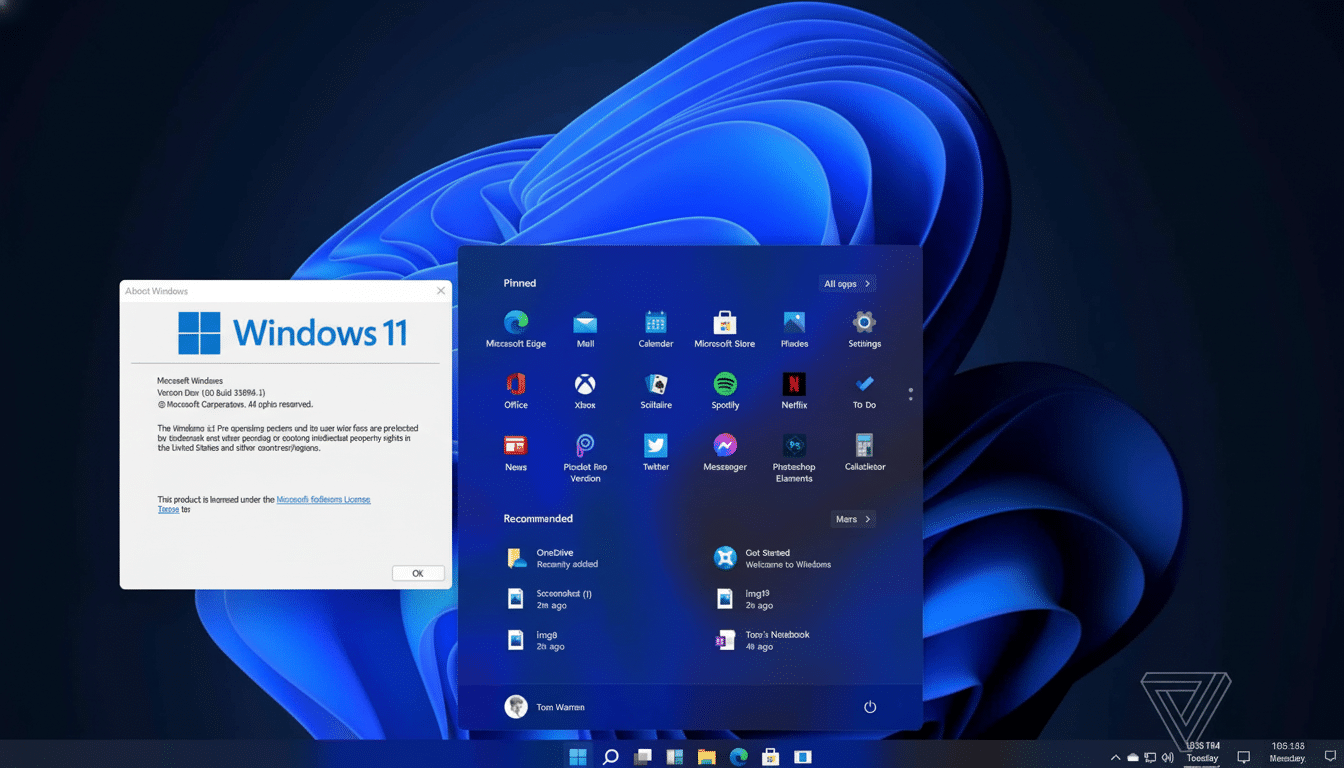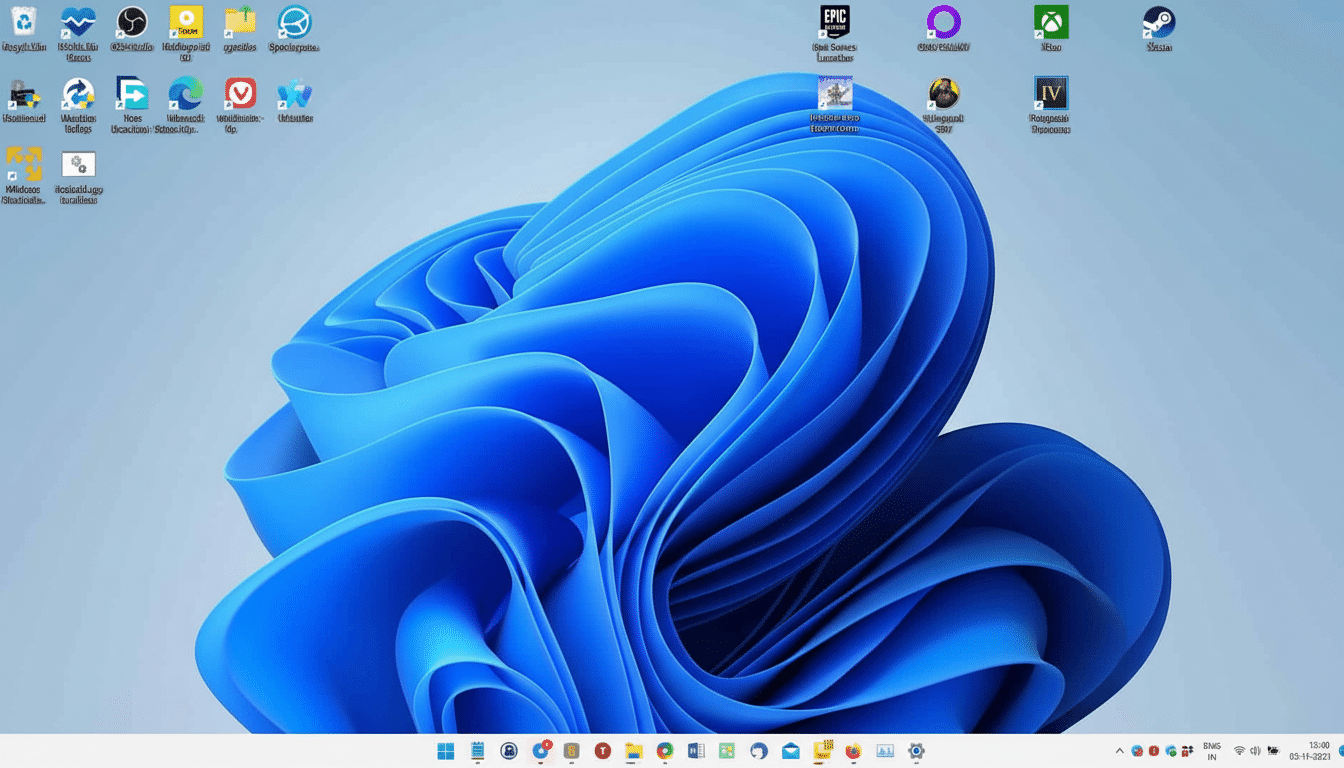I lived in Windows 11 for one week following years on Linux, using the same hardware and same daily workload. I expected trade-offs. What I had not anticipated were the many times that the OS forced me into decisions I didn’t want to make, or how much slower and less open-ended certain normal parts of my workflow felt compared with a regular Linux desktop.
Here are the nine most significant issues I encountered, along with some context and why they should matter to anyone looking at a similar transition.
- 1. Account lock-in over local control by default
- 2. Passkeys and Windows Hello seemed brittle
- 3. App Store pop-ups that lock down the screen
- 4. Settings that wouldn’t stick across drivers
- 5. Ads and promotions in the interface remain pervasive
- 6. OneDrive as the silent default for saves
- 7. WebView2 bloat and background churn drain resources
- 8. Security status confusion across Windows tools
- 9. Power defaults and update anxiety on laptops
- What I learned this week from using Windows 11

1. Account lock-in over local control by default
Windows 11 Home tries to steer beginners toward signing in with a Microsoft account during setup. Microsoft’s own support doc states that internet and account pairing is needed the first time you use the device, and while there are workarounds (and more later), it’s not easy. Local user accounts on Linux are so easy and first class. The difference, of course, is where the two draw the line: Windows 11 assumes (by default) cloud identity; Linux codification assumes you own the machine.
2. Passkeys and Windows Hello seemed brittle
The future is passkeys, originating with the FIDO Alliance, and supported by Google and Apple. But on Windows 11, passkeys associated with Windows Hello can fail silently if Hello is not set up just so or if you switch browsers. Microsoft records those dependencies, but the UX does not provide much help to explain that when a login hangs — I found it more predictable with regard to profiles using a hardware security key on Linux in the browser.
3. App Store pop-ups that lock down the screen
Third-party apps from the Microsoft Store sometimes use methods to aggressively upsell in a way that can steal focus and sit on top of other windows. It’s not universal, but it’s common enough to interrupt the flow. On Linux, package managers and curated repos reduce that somewhat (and when an errant window does pop up, it’s easy to kill off the process from another TTY or SSH without a reboot).
4. Settings that wouldn’t stick across drivers
Fundamental things like scroll direction should be easy to change. On my test machine, Windows 11 just didn’t get that, returning to “natural” scrolling on a whim presumably because OEM drivers were fighting against the system’s Precision Touchpad settings. It’s a classic Windows pain point: the split between Windows settings and vendor utilities. On libinput-based Linuxes, the switch is universal and works on all devices.
5. Ads and promotions in the interface remain pervasive
Promotional tiles inside Start, suggestions in Settings, and occasional banners within File Explorer are very much the Windows 11 lifestyle for consumer editions.
Microsoft has tested more of these in Insider builds. I don’t actually want my OS to sell me things. Desktop environments on Linux maintain the shell as neutral, and that neutrality lowers distraction and cognitive load.

6. OneDrive as the silent default for saves
Default save dialogs and folder backups that are set to go to OneDrive can catch out users who never signed up for cloud storage. Microsoft sells this as protection, and for many it is. But local-first workflows matter, even for compliance or those training locally hosted AI models. During a week of using that setup, I went crazy having to double-check nearly every save location — something in Linux I never have to think about because defaults respect local storage.
7. WebView2 bloat and background churn drain resources
Windows 11 relies on the Edge WebView2 runtime for components such as Widgets, the Microsoft Store, and some parts of Outlook and Teams. On my machine, CPU and fan usage increased for WebView-related processes even when I wasn’t using Edge. Microsoft’s architecture makes a lot of sense for modern app frameworks, but with it comes overhead. And on Linux, a stripped-down window manager and fewer background web runtimes meant cooler (dare I say silent?) running conditions.
8. Security status confusion across Windows tools
Windows Security provided conflicting statuses: on some pages it said protections were on, while others showed items off awaiting account sign-in. For non-experts, such uncertainty is dangerous. AV-TEST also consistently ranks Microsoft Defender highly for protection. Boring, bitty program groupings like this — and the multidimensional layers of cloud features, account tie-ins and SmartScreen policies they encompass — are too complex. Linux’s model — fewer background services, curated repos and privilege separation — mitigates the requirement to spend all your time babysitting a dashboard.
9. Power defaults and update anxiety on laptops
My laptop wouldn’t sleep or hibernate like it should until I went into power plans and fiddled with those settings and poked my way through OEM utilities. OEM images often ship with tweaked defaults, and Windows Update can nudge those again after a feature release. Yes, you can provide Active Hours and establish reboot rules, but the anxiety remains. I trusted the machine on Linux to use sane defaults and not surprise-restart, drain battery while idle, etc.
What I learned this week from using Windows 11
Windows 11 is still the default desktop operating system for most people — StatCounter’s numbers suggest Windows has greater than a 50% share globally on the desktop — and it’s great at all things gaming, Office integration and compatibility across hardware. But as a Linux user, the sticking points never went away: account pressure, cloud-first nudges, vendor-imposed settings and web runtime overhead.
Could I tweak Windows 11 into submission too? Yes, with time — Group Policy edits and disabling Widgets and reconfiguring defaults do assist there. The bigger issue is philosophy. With Linux, I have local control first and only use services on my terms. A week into Windows 11, that difference wasn’t theoretical; it was the thing I noticed every hour.

